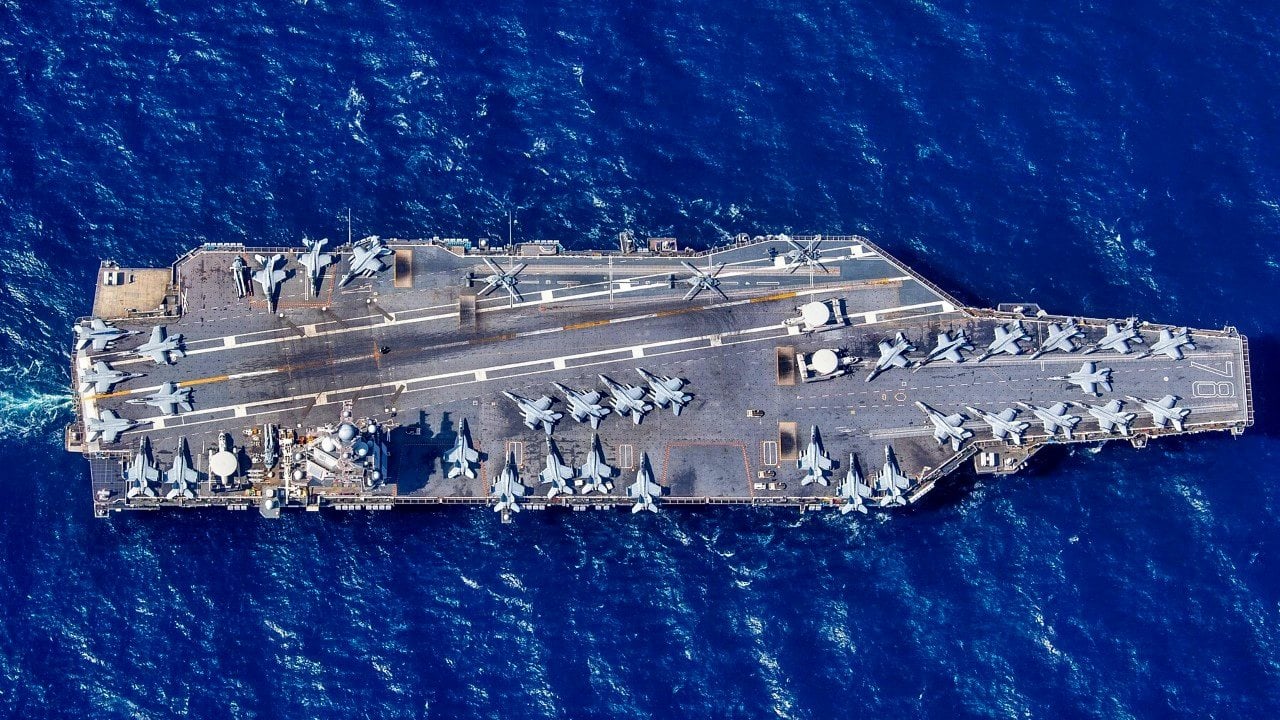Is U.S. Navy's New USS Gerald R. Ford Aircraft Carrier Ready for Combat?
The USS Gerald R. Ford, the U.S. Navy's most technologically advanced and expensive aircraft carrier, faces ongoing technical challenges that raise concerns about its operational capabilities.
SUMMARY: The USS Gerald R. Ford, the U.S. Navy's most technologically advanced and expensive aircraft carrier, faces ongoing technical challenges that raise concerns about its operational capabilities.

-Initially priced at $13.3 billion, the carrier has encountered significant issues, particularly with its novel launch and recovery systems, EMALS and AAG, which are crucial for enhancing the ship's sortie generation rate (SGR). Despite being designed to outperform the Nimitz-class carriers in SGR, the Ford has struggled to demonstrate this capability, leading to an extension of its Initial Operational Test and Evaluation (IOT&E) period through Fiscal Year 2027.
-This extension and the inability to conduct extended operations at sea or perform standard sortie-generation tests highlight persistent reliability challenges that jeopardize the vessel's combat readiness and overall effectiveness.
Challenges Aboard USS Gerald R. Ford: Can It Meet Its High Expectations?
The lead ship of the U.S. Navy’s latest class of carriers, the USS Gerald R. Ford, was commissioned with high expectations. At $13.3 billion, it is the most expensive warship ever built. While the carrier is loaded with the latest technology, technical problems have beset the fledgling vessel, leading observers to question whether the Ford can conduct combat operations.
IOT&E extended
Initial operational test & evaluation (IOT&E) for the USS Gerald R. Ford is expected to extend through Fiscal Year 2027, according to a recent report from the Pentagon’s chief weapons tester. The IOT&E extension is a bad sign for the Ford, pointing to persistent reliability challenges.
“To be blunt, the USS Ford has yet to demonstrate the ability to operate at sea—uninterrupted and without a port call—for more than 35 days at a stretch,” Forbes reported. “It also seems unable—or the Navy is simply unwilling—to even carry out a standard set of sortie-generation tests—allowing an easy ‘apples-to-apples’ comparison with the Navy’s legacy Nimitz class carriers.”
The technical problems hindering the Ford’s sortie generation rate (SGR) are a sharp irony. The Ford was designed, at great expense, with novel technologies intended to improve the vessel’s SGR over preceding carriers.
Improving the SGR
Initial testing has revealed a problem with the Ford’s launch and recovery systems, which are of course fundamental to the vessel’s SGR. An aircraft carrier’s sole purpose is to launch aircraft, so the SGR is the vital metric for measuring the overall effectiveness of a vessel.
The Ford was built specifically to have a higher SGR than the Nimitz. One of the reasons the Ford is so expensive is the development of the electromagnetic aircraft launch system, or EMALS, and the advanced arresting gear (AAG) recovery system.
The EMALS uses an electromagnetic current to catapult aircraft from the decks of Ford-class carriers. Previous carriers like the Nimitz relied on a steam-powered catapult. The EMALS, when working properly, is considered an improvement for a few reasons. For one, the EMALS accelerates aircraft more smoothly, meaning less wear and tear on airframes. Further, it allows for more nuanced calibration, meaning more types of aircraft can be launched. Finally, the EMALS is cheaper and easier to maintain. All these benefits should translate to a higher SGR, which is why the Navy greenlighted the system rather than continuing to rely on steam-powered catapults.

The AAG, meanwhile, replaces the MK 7 hydraulic arresting gear. Like the EMALS, the AAG is compatible with a greater variety of aircraft, and in theory will allow the Ford-class to achieve a higher SGR.
However, the Ford seems to be far from ready to facilitate an SGR that will justify the carrier’s cost.
“With a history of broken performance promises, public relations games, little accountability … America’s sea service hasn’t exactly covered itself in glory during the USS Ford’s acquisition process,” Forbes reported.
About the Author: Harrison Kass
Harrison Kass is a defense and national security writer with over 1,300 total pieces on issues involving global affairs. An attorney, pilot, guitarist, and minor pro hockey player, Harrison joined the US Air Force as a Pilot Trainee but was medically discharged. Harrison holds a BA from Lake Forest College, a JD from the University of Oregon, and an MA from New York University. Harrison listens to Dokken.


